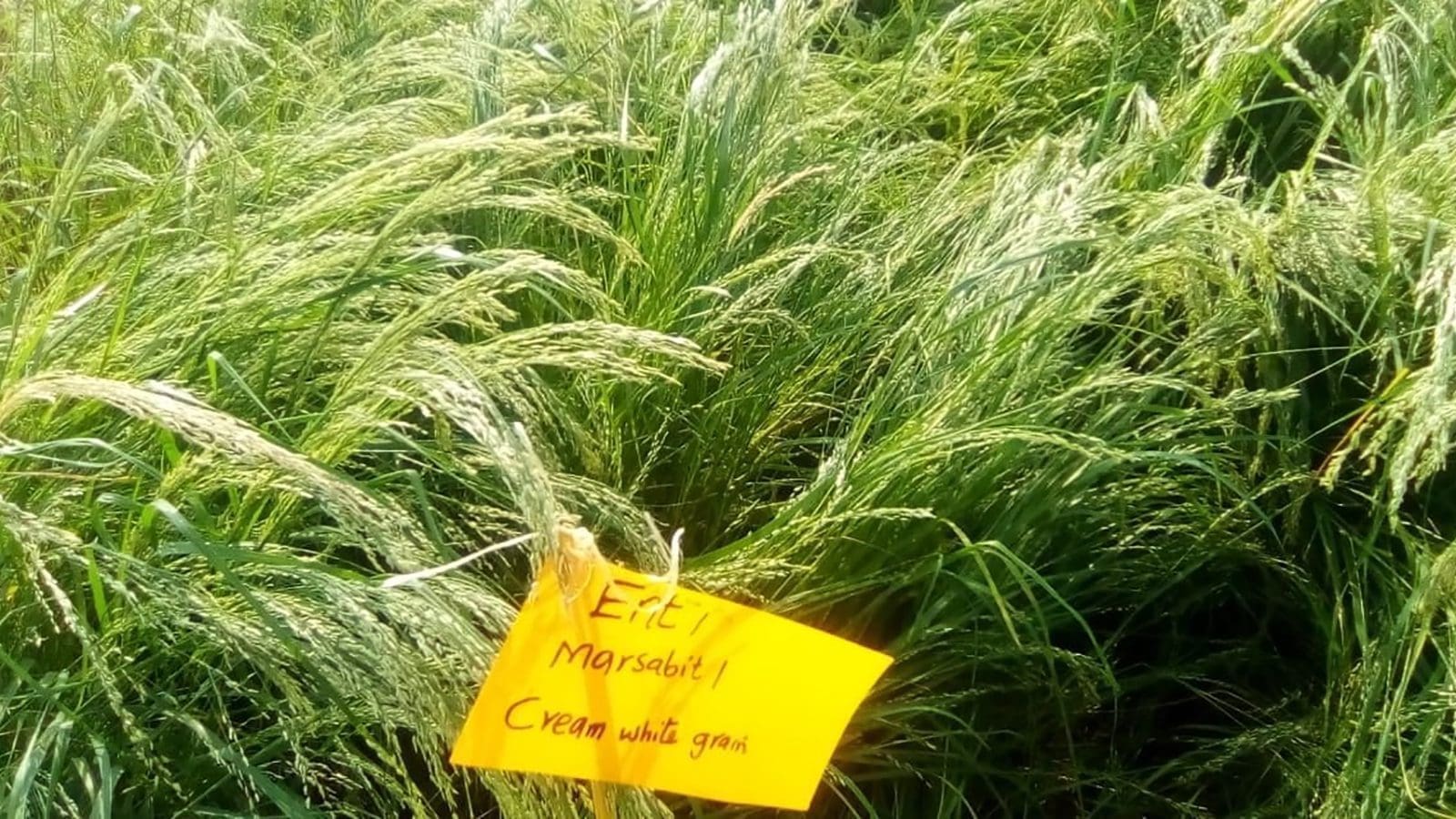KENYA – The Kenya Agricultural and Livestock Research Organisation (KALRO), has introduced Teff crop on its research list.
Among the varieties under research work include Marsabit 1, Marsabit 2, KisTeff 1, Aila Red, KIM-1, Lusike white, KIM-2, KisTeff 2, KIB -26 & KIB -27.
Teff is a dual-purpose crop used as human food and livestock feed and is commonly used to prepare fermented flatbread famously known as Injera.
It is considered a super food because of its high nutritive values in aspects of iron, calcium, magnesium and zinc.
According to the state-owned research institution, the current Teff production in Kenya is at 1 ton/ha in farmers’ fields compared to the worlds average of 3 tons/ha however its potential is about 6 tons/ha.
To boost productivity, KALRO under the KCSAP project has deployed resources to develop intervention strategies to upgrade the Teff value chain including building the capacity of 20 extension staff and farmers from Marsabit County on the Technology, Innovations and Management Practices (TIMPS) of Teff value chain.
In other related news, researchers at KALRO are seeking approval from government institutions such as the National Biosafety Authority and Kenya Plant Health Inspectorate Services (KEPHIS), to formally introduce Bt (Bacillus Thuringiensis) maize in the country.
Kenya’s current Teff production stands at 1 ton/ha against potential of about 6 tons/ha
Bt is a species of bacteria that lives in soil and makes proteins that are toxic to specific insects when eaten.
It has long been popular with organic farmers because it is considered a “natural insecticide” hence aids in curbing environmental pollution.
The Kenyan maize production capacity has dwindled over time owing to the effect of pests and diseases such as the stem borer and fall armyworm.
According to research by the Center for Agriculture and Bioscience International (CABI), the stem borer alone destroys 12 percent of the nation’s maize production, while the fall armyworm causes an average maize loss of 60 percent.
The Bt maize research is part of Kenya’s 10-year Agricultural Sector Transformation and Growth Strategy (ASTGS), which is intended to build on previous strategies to revitalize the country’s agricultural sector by 2029 and make it a regional powerhouse.
The strategy emphasizes integrating modern farming techniques into Kenya’s agricultural sector to improve productivity and includes lifting Kenya’s ban on Genetically Modified (GM) crops.
As a step towards adoption of technologies in boosting productivity, Kenya has become the first country globally to give a green light to the cultivation of genetically modified (GM) cassava, capable of resisting the destructive cassava brown streak disease (CBSD).
CBSD is a viral disease spread by whiteflies and infected cuttings, which leads to devastating losses of up to 98 percent for cassava farmers in Kenya.
The approval makes cassava Africa’s fifth biotech crop approved for open cultivation after cotton, maize, soybean and cowpea.
It was developed by KALRO and the Kenya National Biosafety Authority (NBA) has okayed the application, following a comprehensive safety assessment.
Liked this article? Subscribe to Food Business Africa News, our regular email newsletters with the latest news insights from Africa and the World’s food and agro industry. SUBSCRIBE HERE










